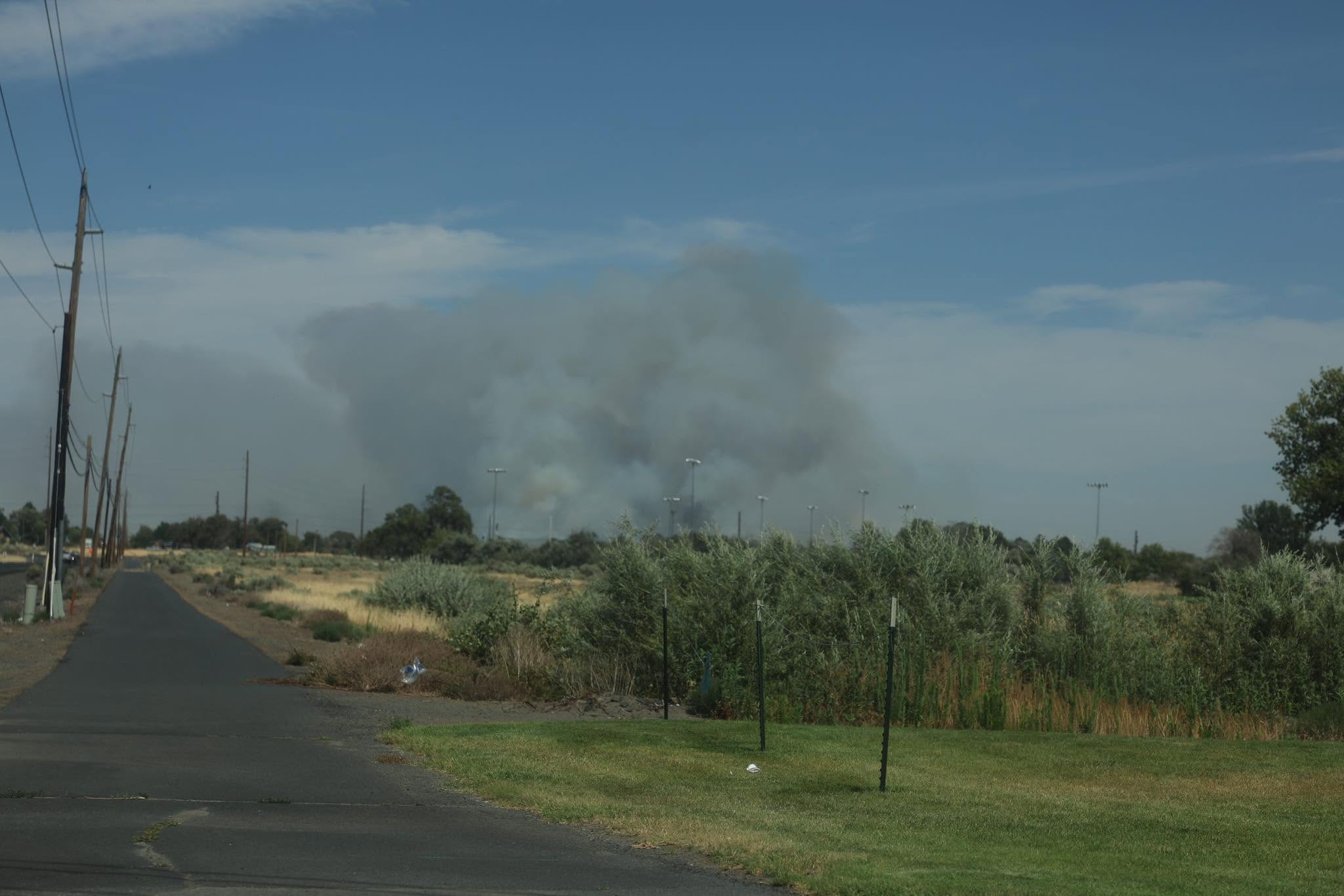Trade war rattles Oregon’s economy
Published 2:00 pm Wednesday, September 4, 2019

- Wind turbines operate amid the wheat fields of Eastern Oregon. The state’s farmers, like those across the country, are struggling to predict how the Trump’s trade war will impact them.
PORTLAND — Speaking last month on stage in Pennsylvania, President Donald Trump complained about Japanese auto imports — and then ridiculed one of the Northwest’s largest exports.
“They (Japan) send thousands and thousands — millions — of cars. We send them wheat. Wheat,” the president deadpanned, eliciting derisive laughter from his audience. “That’s not a good deal. And they don’t even want our wheat. They do it because they want us to at least feel that we’re OK. You know, they do it to make us feel good.”
The comments left Oregon wheat farmers concerned. They were alarmed not just that the president was disparaging their crops, but also that his comments appeared to signal a lack of interest in reducing Japanese tariffs that were making U.S. wheat uncompetitive. Wheat and grains are Oregon’s fourth-largest export category, with more than 40% going to Japan and China.
Trump’s comments were emblematic of his unorthodox approach to trade policy, which has sent financial markets gyrating and sparked fears of a national recession. A closely watched state forecast issued last week warned of “bad behavior and policy mistakes” that could derail the national economy — and, by extension, Oregon’s.
“The risk of recession is clearly rising in recent months,” state economists wrote.
From the region’s largest companies to tiny startups, employers are postponing hiring and spending, complaining of a whipsaw trade policy that makes it impossible to make strategic plans. Oregon farmers, like those across the country, are struggling to predict how the trade war will impact them.
“In general, this uncertainty with trade issues certainly weighs heavily,” said Steve Mercer, communications vice president for U.S. Wheat Associates, which represents farmers in Oregon and elsewhere.
Characteristic of its unpredictable approach, the administration suddenly threw Northwest farmers a lifeline Aug. 25 — announcing it had cut a deal with Japan and indicating lower wheat tariffs would be part of the bargain.
Yet farmers remain wary, since the deal isn’t final and details aren’t public. Mercer said the trade war is making domestic farmers less competitive as customers overseas reconsider long-term relationships with their American suppliers.
“They’re uncertain about the U.S.,” he said, “so they’re considering alternatives.”
That uncertainty extends to all of Oregon’s major industries. From agriculture to heavy industry, agriculture to sportswear, businesses say they’re confounded by the president’s approach to trade.
“Nobody knows what Trump’s going to do next,” said Frank Nichols, founder and CEO of Silicon Forest Electronics, a 20-year-old Vancouver company that makes specialized electronics for the aerospace, defense and industrial markets.
Weakening Oregon exports
Oregon economists spelled out the risks of the administration’s trade policy last week in the state’s quarterly revenue outlook, warning that “Cracks may be forming due to the trade war.”
Last week’s nonpartisan report noted continued strength in the Oregon labor market and manufacturing output. Unemployment is at a historic low of 4% and wages are rising rapidly.
After a decade of continuous expansion, the state’s rainy day funds have more than $2.5 billion in reserves — equivalent to 12% of Oregon’s two-year budget. That could cushion any downturn by providing a measure of stability in public spending.
Intel, Oregon’s largest corporate employer, is continuing to invest in the state despite declining sales and public misgivings about the trade war. The company has just begun construction of a multibillion-dollar expansion to its D1X research factory in Hillsboro.
Though Intel has warned of declining sales this year, and anxiety over the trade war, it’s pressing ahead with the project. Thousands of contractors will help build the expansion over the next two years, and Intel says the project will add 1,750 long-term jobs by the end of 2021.
Still, analysts see worrisome signs in the Oregon data.
Excluding electronics, a volatile sector that rises and falls with Intel’s production cycle, Oregon exports were down more than 7% in the first half of the year. Manufacturing and timber shipments to China are in steep decline.
And the number of manufacturing hours worked in the state is falling, at a pace more than double the national rate. That suggests manufacturers may be dropping shifts, or perhaps less overtime among factory workers.
“There are indications that say there are troubles ahead,” said Rep. Lynn Findley, R-Vale, vice chairman of the House Committee on Revenue. He said the decline in Oregon manufacturing hours is particularly alarming.
Trade policy is affecting Oregon agriculture and other sectors, Findley allowed, but he said state policies are exacerbating the situation. He said a new requirement for paid family leave, a $1 billion annual business tax for education, and the prospect of a state carbon tax on emissions are adding to the uncertainty.
“People that I have spoken with are concerned about making an investment in Oregon with all of these impacts,” Findley said.









